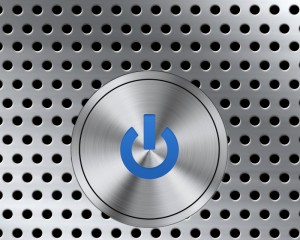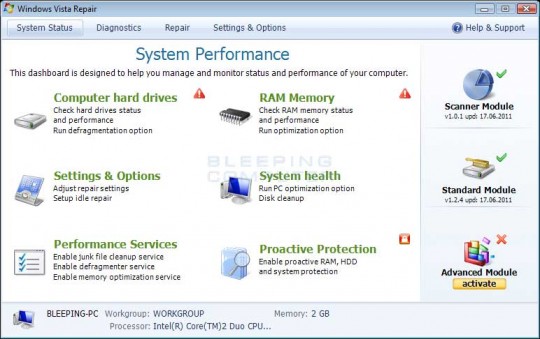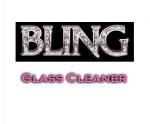14 June 2015 | Computers, Do-It-Yourself, SuperSaver |
 Let’s say you’ve got an aging laptop. It doesn’t exactly run like new any more. Maybe the battery is a bit weak even on a full charge, or perhaps the fan makes a lot of noise even after you cleaned it out.
Let’s say you’ve got an aging laptop. It doesn’t exactly run like new any more. Maybe the battery is a bit weak even on a full charge, or perhaps the fan makes a lot of noise even after you cleaned it out.
Traditionally, you’d have to pay a pretty penny for new laptop parts.
You’d also have a hard time finding instructions or guides on how to remove and replace any parts in your lappy.
Well, nowadays, things are a bit different.
You can get all kinds of laptop parts on the cheap, and all the how-to guides you’ll need are already out there just waiting for you on YouTube!
(more…)
8 March 2015 | Do-It-Yourself, Gizmos |
 You buy a new 400″ TV. You hook it up, and pop in a DVD or Blu-ray disc.
You buy a new 400″ TV. You hook it up, and pop in a DVD or Blu-ray disc.
You expect to enjoy a glorious movie-watching experience, but instead, your movies look like TV shows or soap operas.
What gives?
As it turns out, the problem is your fancy new TV. Get ready for this: it’s too realistic, and your brain doesn’t like that.
Read on to find out how to fix it!
(more…)
25 January 2015 | Computers, Do-It-Yourself |
 You know the drill: You turn on your puter, and it doesn’t boot, beep, or do anything else. What it does do is power itself off again after a second or two.
You know the drill: You turn on your puter, and it doesn’t boot, beep, or do anything else. What it does do is power itself off again after a second or two.
Or… Your puter works fine, but it spontaneously enjoys turning itself off.
Whatever could be the matter?
Naturally, the first thing you’ll think of (because you’re a genius) is that something is broken – and you’ll probably guess that it’s the power supply.
Not so fast! There’s one thing you need to check first before you invest time and money replacing a bad power supply…
(more…)
18 January 2015 | Computers, Do-It-Yourself, SuperSaver |
One day, you turn on your laptop. Maybe no thing happens, or maybe you get some error message about fan speed, or maybe you just get a “system halted” message. Then again, perhaps your computer works just fine, but it’s starting to sound like a vacuum cleaner because the fans are running at full blast!
thing happens, or maybe you get some error message about fan speed, or maybe you just get a “system halted” message. Then again, perhaps your computer works just fine, but it’s starting to sound like a vacuum cleaner because the fans are running at full blast!
At this point, you may be inclined to freak out. But don’t go there just yet…
If this sounds familiar, it’s because you probably read my earlier post, How to Clean the Inside of a Desktop Computer. This edition is specifically for laptops.
Usually, cleaning the fan and heat sink inside your laptop is a lot easier than you might think.
With a few dollars and a bit of bravery, you can “dust” inside your laptop (without taking it apart, hopefully) even if you don’t know anything about how computers work.
If you can dust your house, you can dust your lappy!
(more…)
30 December 2014 | Computers, Do-It-Yourself, SuperSaver |
 One day, you turn on your computer. Maybe nothing happens, or maybe you get some error message about fan speed, or maybe you just get a “system halted” message. Then again, perhaps your computer works just fine, but it’s starting to sound like a jet engine because the fans are running at full blast!
One day, you turn on your computer. Maybe nothing happens, or maybe you get some error message about fan speed, or maybe you just get a “system halted” message. Then again, perhaps your computer works just fine, but it’s starting to sound like a jet engine because the fans are running at full blast!
At this point, you may be inclined to freak out. But don’t go there just yet…
There’s one thing most people don’t think about, and that is the fact that computers produce heat. Heat is bad for electronics, so the computer is cooled by heat sinks and fans. Fans and heat sinks get dirty, and eventually clogged. Oops!
With a few dollars and a bit of bravery, you can “dust” inside your computer even if you don’t know anything about how computers work.
If you can dust your house, you can dust your puter!
2 March 2012 | Computers, Do-It-Yourself |
Lucky you! This happened to a friend of mine recently. She was minding her own business, surfing the web. A little box popped up, and it looked just like a Windows dialog box that said something about Microsoft Security Something-or-Other.
So, of course, she clicked the button. After all, it looked genuine enough!
Not long after that, a program that looks like the following image came up:

It began to give her all kinds of warning messages. Her GPU was overheating, her processor was overheating, she was out of RAM, and her hard drive was corrupted! Then it made 25 “Error Reading File” windows pop up.
If you are seeing this problem, there is a very simple process to follow to rid yourself of the malware without reinstalling Windows and starting from scratch!
(more…)
20 August 2011 | Do-It-Yourself |

Hope he reads this post!
Everybody loves superglue. It bonds darn near anything to darn near anything else, darn near instantly.
There’s only one problem: it also bonds skin.
Another problem: it’s hard to remove from skin once it dries – or even before it dries.
Most people will tell you to use nail polish remover. Others will spend way too much money on official “Superglue Remover” products.
But there’s a very simple way to remove superglue that works in seconds…
(more…)
10 July 2010 | Do-It-Yourself, SuperSaver |
 After my last post entitled Make Your Own Carpet Cleaner Solution, I realized that there is one other cleaning solution which never hangs around very long: glass cleaner!
After my last post entitled Make Your Own Carpet Cleaner Solution, I realized that there is one other cleaning solution which never hangs around very long: glass cleaner!
I don’t know about you, but I can never find a bottle of the stuff. Maybe the problem is that with enough windows and mirrors around, you need a LOT of glass cleaner to keep everything looking sparkly clean. Alas, that costs money.
As you may have guessed, glass cleaner is ridiculously simple and cheap to make. Even if you’re paying 99 cents for a refill bottle, you’re paying way too much.
And so, in this post, I shall endeavor to instruct you on how you can brew your own “Bling” Glass Cleaning Solution!
(more…)
12 June 2010 | Do-It-Yourself |
 If you happen to have pets, children, or a husband, then you most definitely will need some kind of product to clean tough carpet stains.
If you happen to have pets, children, or a husband, then you most definitely will need some kind of product to clean tough carpet stains.
There are many commercial products out there that claim to do the trick. After having tried many of them – from sprays to powders to foams – I was truly amazed that none of them worked that well. The one or two that did seem to remove most of the stain required a LOT of scrubbing with a brush. Of course, vigorous scrubbing tends to ruin carpet fibers!
To make matters worse, commercial carpet cleaning products can be relatively expensive.
Thus, I set out to brew my own ultra-powerful carpet cleaning solution for just pennies. And I’m happy to report that I succeeded! Here’s how you can make your own super-powerful carpet cleaner…
(more…)
25 April 2010 | Computers, Do-It-Yourself |
 A lot of people think that defective RAM modules are easy to detect. They think that if you get a blue screen of death, the error message will reveal that the memory is bad, and that’s that. Problem is, it’s nowhere near that simple.
A lot of people think that defective RAM modules are easy to detect. They think that if you get a blue screen of death, the error message will reveal that the memory is bad, and that’s that. Problem is, it’s nowhere near that simple.
There are two steps to diagnosing bad RAM. The first is that you are able to recognize the possible symptoms of bad memory, and the second is actually using a tool to confirm that your theory is correct. Then you just replace the bad module, and off you go.
A defective memory stick can cause a LOT of different problems, some of which might surprise you. It may seem that your hard drive is corrupted or defective, when in fact it’s the RAM that’s bad! It can all get very confusing.
And so, here I shall endeavor to describe what to look out for with your RAM, and what to do about it.
(more…)
 Let’s say you’ve got an aging laptop. It doesn’t exactly run like new any more. Maybe the battery is a bit weak even on a full charge, or perhaps the fan makes a lot of noise even after you cleaned it out.
Let’s say you’ve got an aging laptop. It doesn’t exactly run like new any more. Maybe the battery is a bit weak even on a full charge, or perhaps the fan makes a lot of noise even after you cleaned it out.










Recent Comments